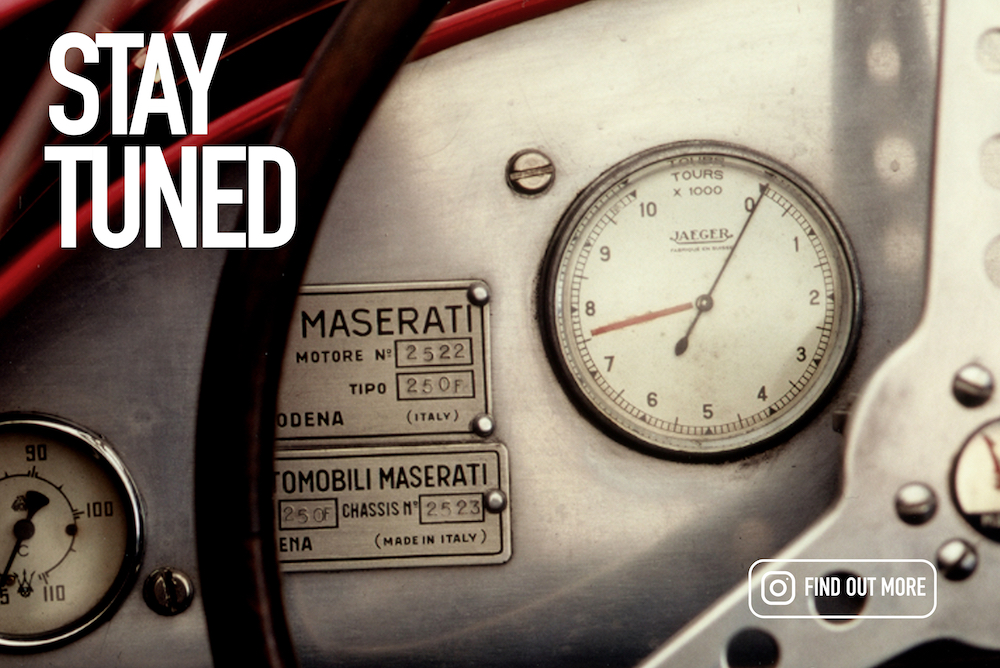A Mercedes-Benz CL coupé and two of its most important makers: Frank Knothe and Professor Peter Pfeiffer, tell of the development of the C 216.
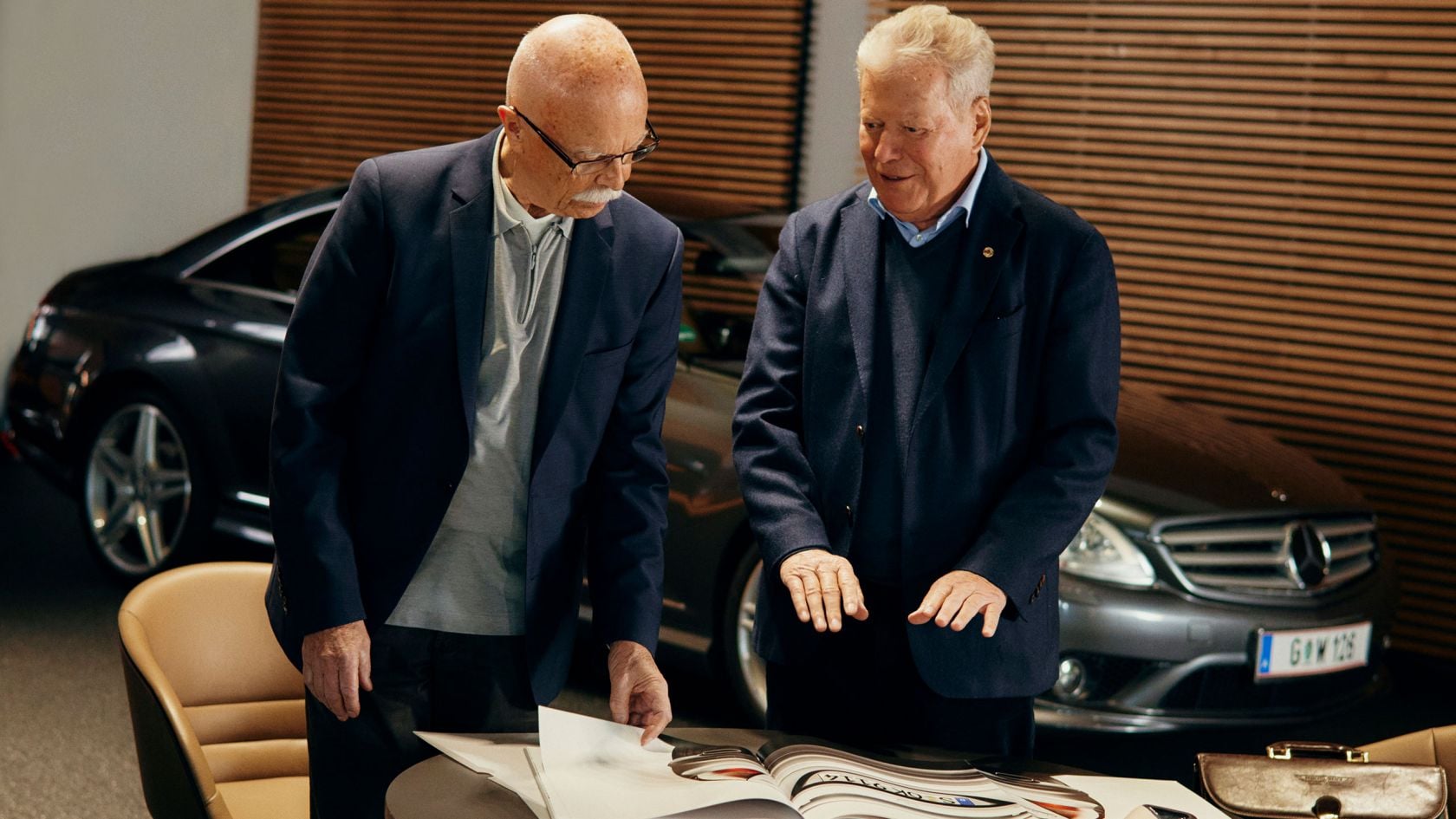
One of the best coupés in the world: A conversation about the interaction of technology and design.
Every Mercedes-Benz is also, in a way, a kind of time capsule. A genuine classic takes you right back to the old days. A current model drives in the present. And a vehicle in development charts a course towards the future. This journey through time to the future starts in the year 2002. Work on the C 216 is just getting off the ground. The future luxury coupé is scheduled for market launch in 2006 – and will excel in all disciplines: comfort, design, and safety, as well as handling. Surely it is to be one of the best coupés in the world.
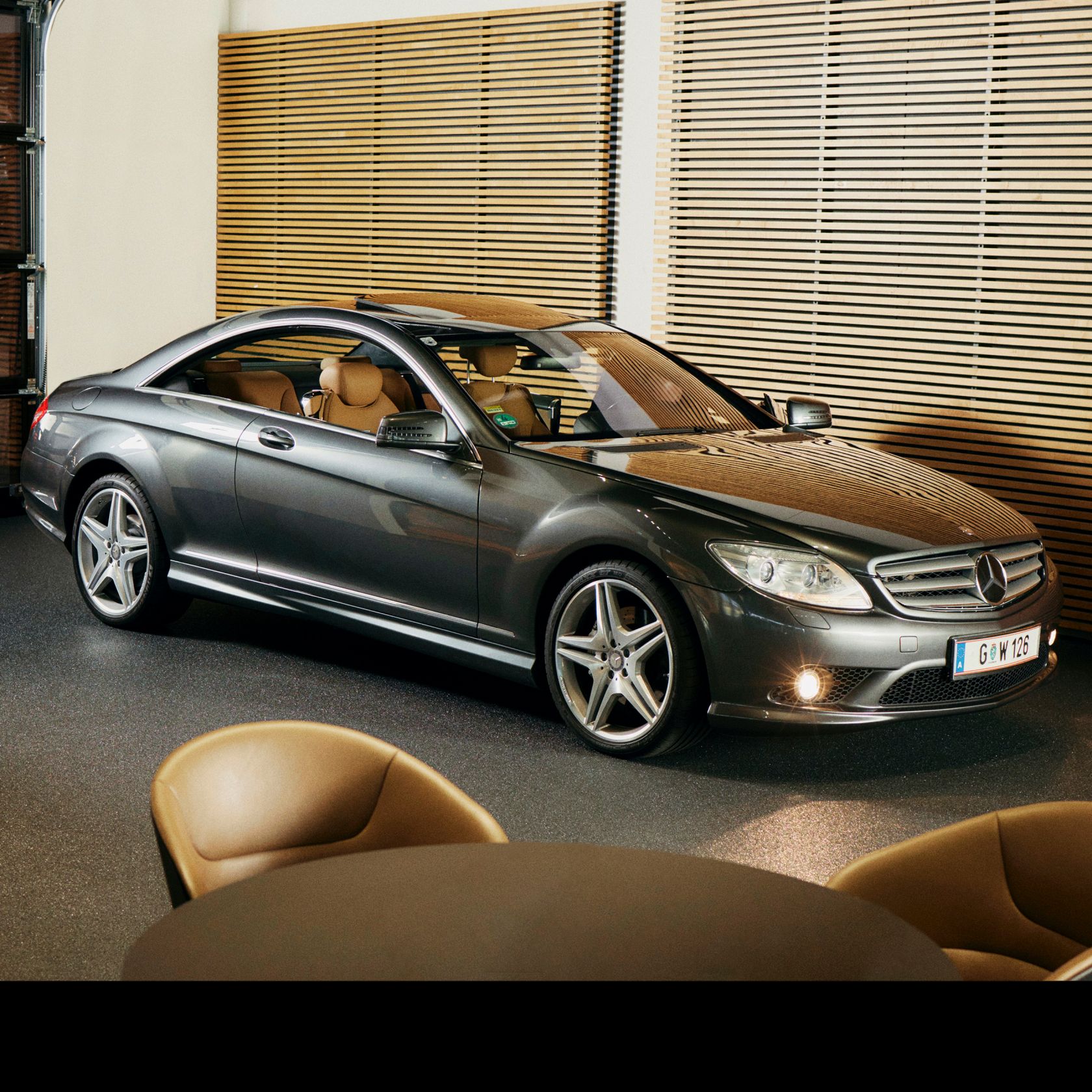
“The C 216 was expected to surpass its already excellent predecessor, the C 215. It was set to offer even more comfort and safety and, with its increased dimensions, be at least as dynamic as this one,” says Frank Knothe, 80, who was responsible for the development of the overall vehicle at Mercedes-Benz 20 years ago, during his tenure that stretched from 1966 to 2006. Peter Pfeiffer, today 78 years old, nods along in agreement. As Bruno Sacco’s successor, he was responsible for the design of all Mercedes-Benz models from 1999 to 2008. “It was important that the vehicle embodied the claim of Mercedes-Benz to be the brand’s next top model alongside the S-Class in terms of appearance, status, emotion and fascination,” he describes. “Design is always the most important ambassador of the brand.”
Professor Peter Pfeiffer.
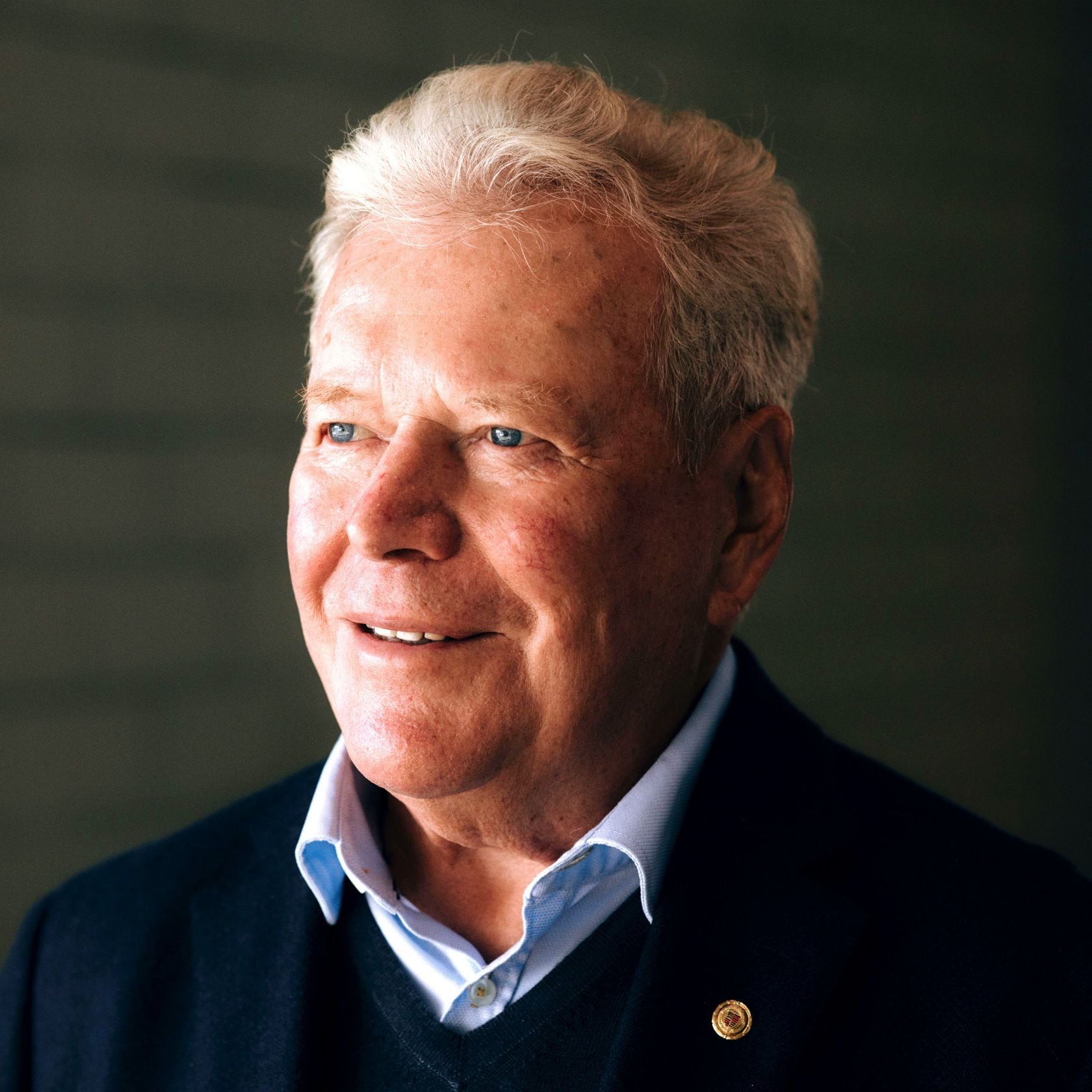
From 1999 to 2008, he headed the Design department of Daimler AG and the previous DaimlerChrysler AG. This included all Mercedes-Benz vehicles: passenger cars, vans, trucks, buses. “Design is the strongest ambassador of the brand to the public,” says Pfeiffer. “It has also become the deciding factor in purchasing decisions.” He joined the company in 1968. The CLS, SLS AMG, 221 series S-Class and 204 series C-Class are among his last highlights.
Striking lines.
Both of these men look at a CL 500 4MATIC in the designo graphite paint finish. The C 216 series is still a fantastic vehicle today, with its striking lines and calm surfaces in interplay with one another, with strong expressiveness and sovereign calm, Knothe and Pfeiffer agree.
And with just a few steps, they are both at the car. The sheer joy of a reunion with this series is written all over their faces. Their expert glances go in all directions around the interior, their hands caress the fine materials and come to rest on the steering wheel.
“Yes, it certainly is a Mercedes-Benz,” says Pfeiffer, and his tone betrays that this is not simply a banal statement, but an emotional sentence from an authoritative source.
The designer is satisfied: “From the first moment of its premiere, every model series must deliver what Mercedes-Benz promises. And not just for a few years, but for a very long time to come. It is nice to experience once again in this car that it really works.”
Two makers of the brand and two biographies. How would Frank Knothe describe his former job? “I can quote Professor Hubbert, who once described my task like this: ‘He is responsible for making the car drive the way it does.’” And Peter Pfeiffer? “My job as a designer was to shape the future of the brand.”
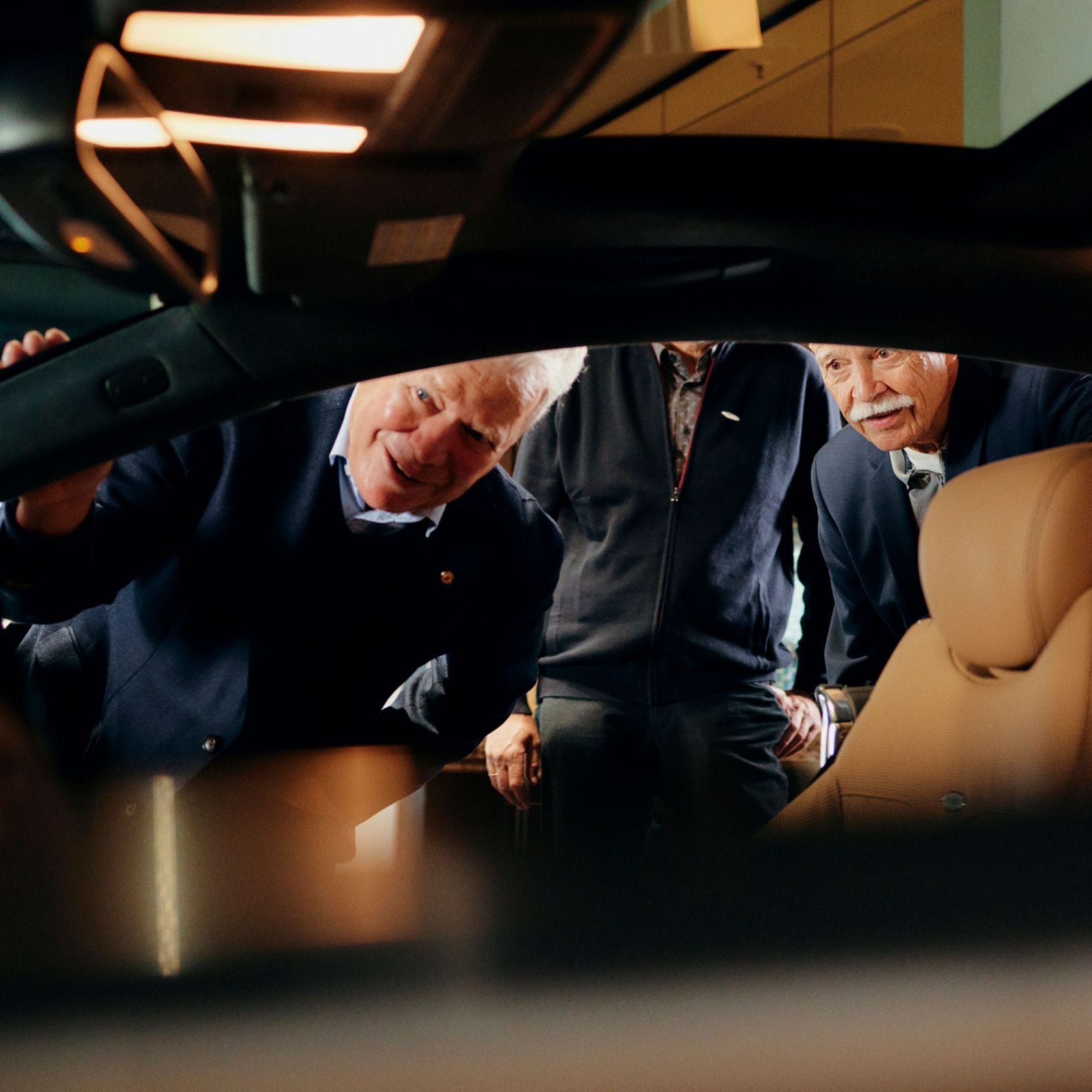
The new time capsule.
Here is a look at the future of the luxury class as it emerges in 2002: Mercedes-Benz is in the middle of developing the new S-Class. Because it is being developed from scratch, the work was already underway back in 1998 – after the 220 series and before the 221 series. Their world premiere is set for 2005. The luxury saloon will again be joined by a coupé. The debut year is set for 2006, one year later. The planners are counting back: since the coupé will share the basis and much of the technology with the saloon, they estimate four years for its development. Thus, the starting signal for the C 216 is given in 2002.
All areas begin their work and in so doing climb into the new time capsule at the same time. Initially, it consists only of basic parameters. “Since the coupé adopted the floor assembly of the S-Class with a wheelbase shortened by 80 millimetres, important basic dimensions were fixed,” recalls Knothe. On this basis, Pfeiffer’s team creates initial design drafts and models as quickly as possible: the coupé gets its look, the new product becomes visually and emotionally tangible. “Our job was to convey to the board what the world might look like in 2006, three, four years in advance, so that they can decide with full confidence. The way the C 216 is going to be launched, it is exactly the right product at the right time. But everyone else involved should also feel comfortable on this journey through time. It was a matter of taking everyone in the whole chain with us.”
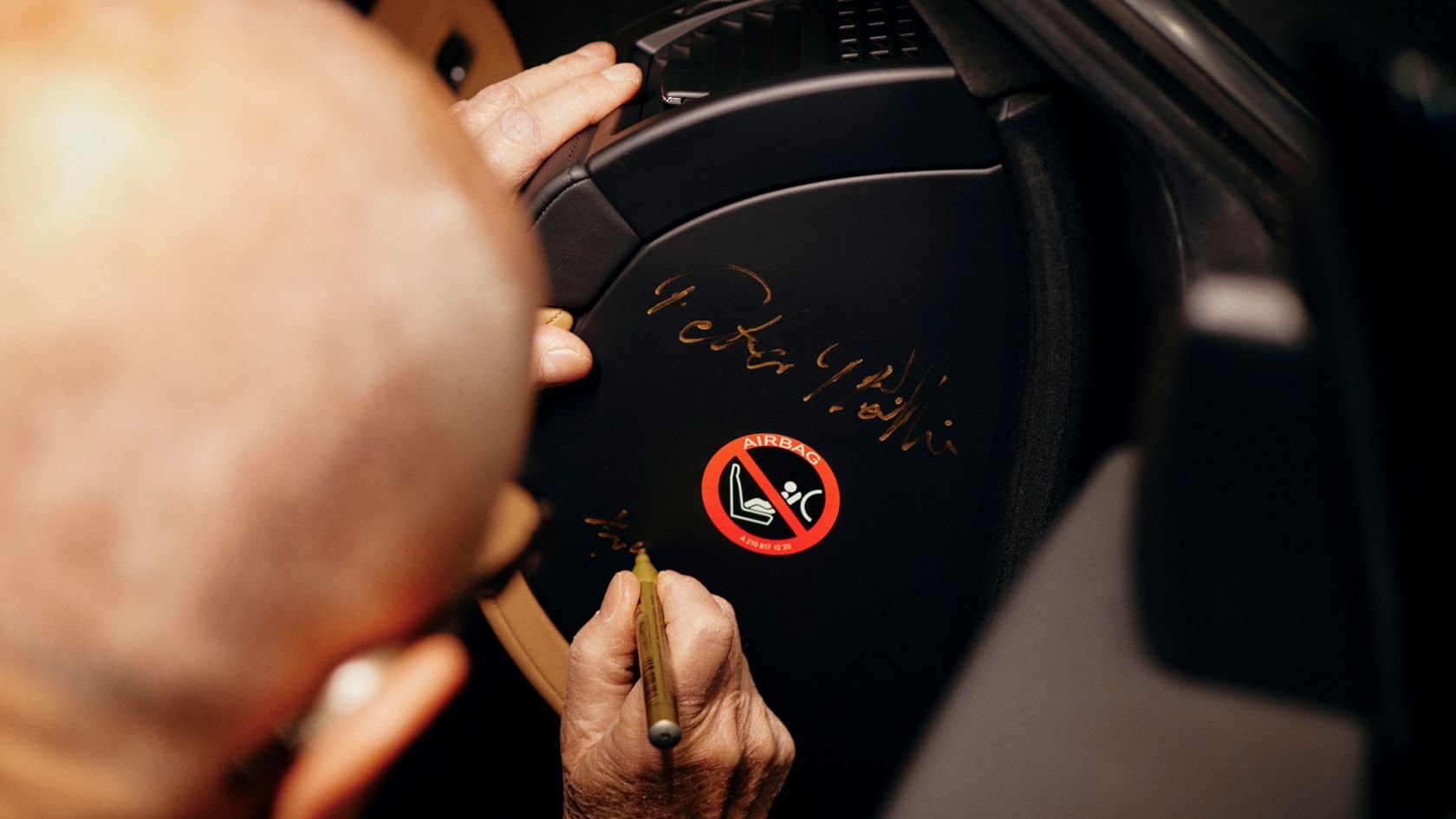
Best quality.
Chassis, active and passive safety, body shell design, electrics and electronics, exterior and interior design, interior appointments, material selection, production, marketing and sales, and many more vehicle subsections: for their part, they provide initial solutions, intermediate statuses and then the final model. “In the vehicle development process, all the individual steps are interlinked and must be closely coordinated, from the first conceptual considerations to the finished production model,” Knothe says, describing the process. “Project organisation and communication are therefore essential. Only in this way can interim targets and the schedule be adhered to in a binding manner.” The departments exchange information with each other at weekly intervals. In addition, they communicate via digital models of the new series. The board of management is also always well informed.
At the same time, the close exchange ensures that compromises of the best quality are made along the development path. Because, of course, everyone wants to pursue the ideal solution for their specialist area. But doing so is not always feasible. Also because another colleague involved in the development would otherwise be too impaired in finding his optimal solution. “Here’s an example to illustrate the point: for the appearance of the vehicle, it would be perfect if the rims only had a wafer-thin layer of rubber coating on them,” says Pfeiffer, laughing at his former colleague.
Knothe grins back: “How am I supposed to create the driving experience of a Mercedes-Benz with a black line? Or optimal driving safety? The tyre and everything attached to it does indeed play a significant role.” “Oh, come on now,” counters Pfeiffer with humour. “The only reason an axle is there is for attaching a smart light alloy wheel.” Knothe grins: “You always used to say that. Until at some point you came around and finally agreed that the multi-link rear axle was not such a bad invention.”
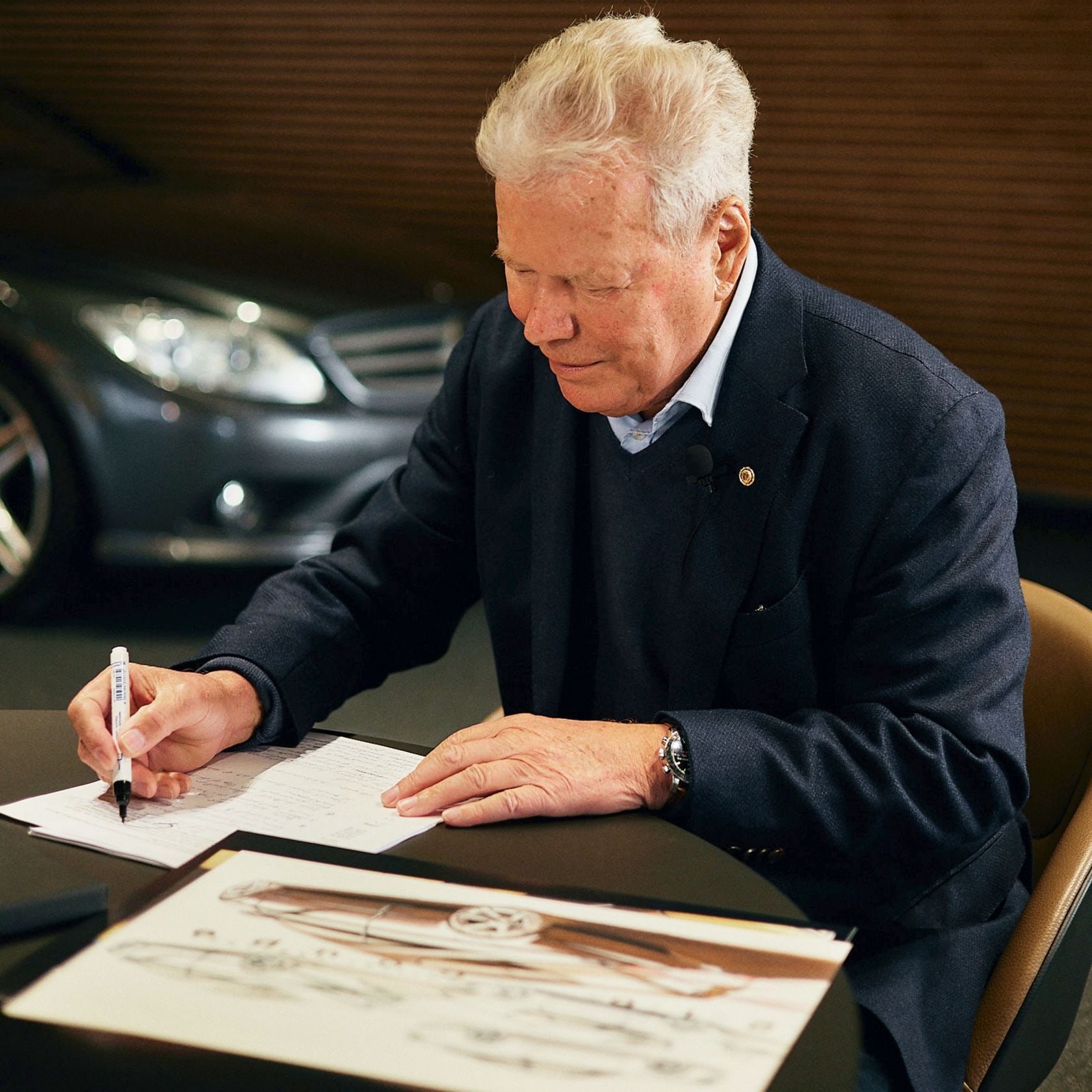
“The sense of unity is very important when it comes to the creation of a car. If we succeed at that, it unleashes great creativity.” Of course, there were always arguments about individual aspects. But that is perfectly normal, Knothe adds.
Test drives also serve the exchange among the parties involved. Because when the new car is driven, it makes solutions tangible, understandable – for everyone. “The driving experience cannot be expressed by technical parameters alone, but is shaped by a holistic perception of all senses,” Knothe knows. At that time, the big model series tours took place twice a year, in summer in the USA and in winter in Sweden. “Each one was a closed-door meeting on the subject of automobiles. All model series under development were there and represented the respective state of the art,” says the engineer.
A special feature of the C 216.
It is the first Mercedes-Benz vehicle to go into series production entirely without prototypes. “Prototypes are always very expensive. We are quickly talking about an amount in the millions per vehicle,” says Frank Knothe. “Since the C 216 was technically largely described via the S-Class of the 221 series, there was no need for prototypes in my view. I asserted that. Since then, derivatives of a model series have always been developed without the use of such test objects.”
In the meantime, the journey through time with the C 216 has arrived in 2006. It is almost finished. After the final work, at the very end there is the acceptance run of the board of management. At the end of May, they will be on the road near Barcelona in Spain. The level of satisfaction with the new luxury model is high: all development goals have been achieved. During the final discussion, Knothe asks the illustrious group if anyone would like to say anything else. He looks around and sees relaxed faces. Only one comes forward: Dr Dieter Zetsche. The softness of the seat is not quite optimal when you get into the car, complains the chairman of the board; it could stand to be minimally improved.
“I gulped in that moment, because a change so close to the end is never good,” Knothe recalls. “But I knew we still had a way to modify the seat structure without jeopardising the world premiere.” Shortly before the end of the day, the C 216 actually becomes a shade better. On 26 June 2006, the time has come: the new CL-Class is in the public spotlight for the first time in Stuttgart. “Highest exclusivity”, “sophisticated design”, “pioneering, cutting-edge technology”, raves the international press. There’s no doubt about it: an excellent new coupé has just debuted. With active ABC suspension (Active Body Control), PRE-SAFE® brake, Intelligent Light System with five light functions and PRE-SAFE® preventive occupant protection. Customers even have a choice of two powerful engines with either eight or twelve cylinders and the AMG versions.
Frank Knothe.
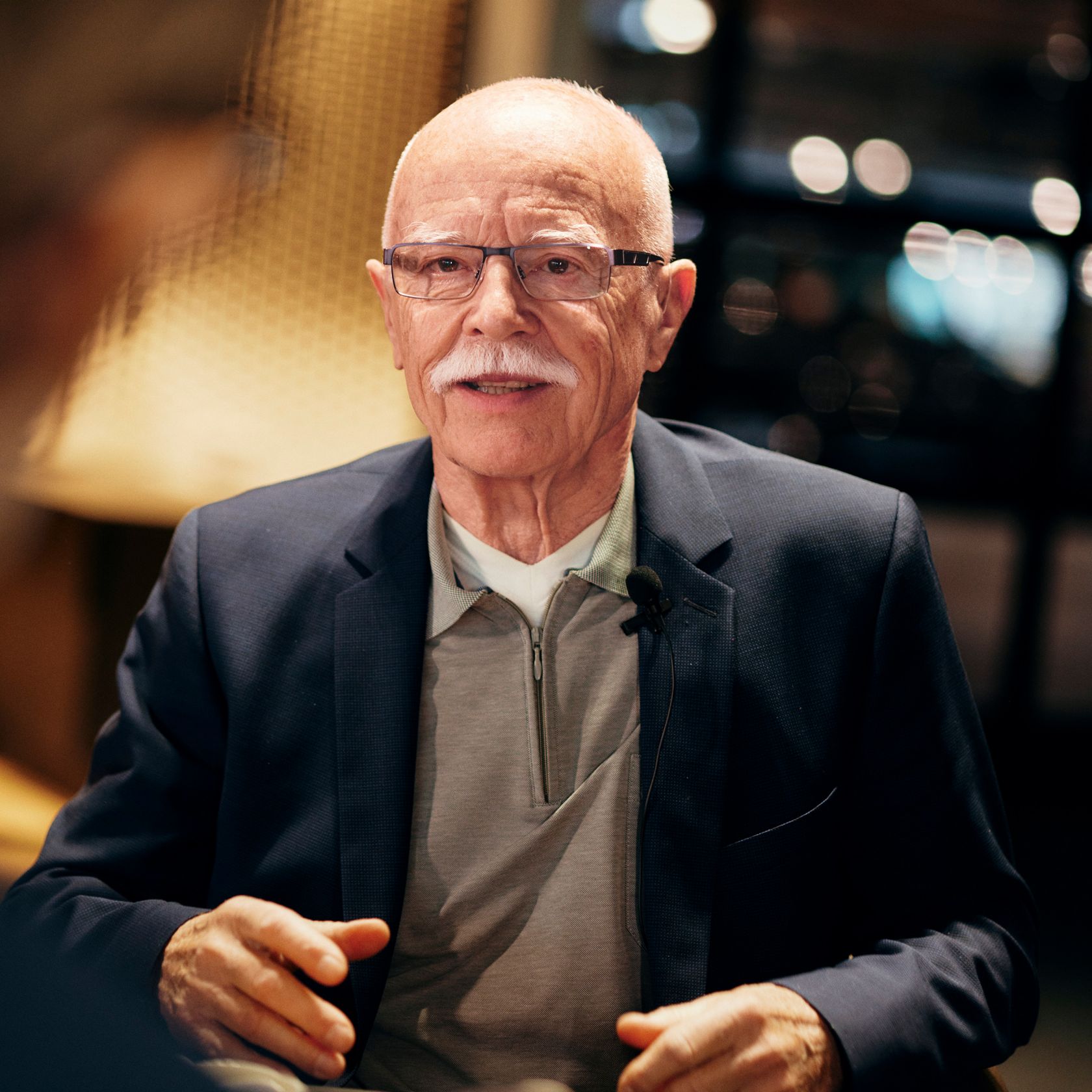
“He is responsible for making the car drive the way it does”: this is how Professor Jürgen Hubbert (former head of Mercedes-Benz) described the work of Frank Knothe, a graduate engineer. One could add that it drives like a Mercedes-Benz. Knothe joined the company in 1966, and from 1994 was responsible for the overall vehicle development of the S-Class, SL and SLK as head of the model series. He also worked on the SLR McLaren. The luxury coupé of the C 216 series marked the end of his career on 31 December 2006.
Suddenly in the limelight.
On their personal journey through time exclusively for the Mercedes-Benz Classic magazine, Peter Pfeiffer and Frank Knothe have now stepped out of the CL 500 4MATIC. The vehicle was provided by Dr Mario Darok, who lives in Graz, Austria. He bought it a few years ago. “I love spacious cars, but have to admit: when it came on the market, I didn’t like it at first. Only gradually did the design start to grow on me.” Pfeiffer nods: “That is understandable. At the world premiere, the public is often very surprised by the vehicle – because they haven’t been part of our journey through time in the years before. Then it is suddenly in the limelight. Of course, we are convinced that it exactly fits the times. It then sometimes takes time until there is broad acceptance.
This is not so bad, because the vehicle will be part of the range for a few years. But sometimes it also happens very quickly. Remember the premiere of the CLS, in 2003 as a concept vehicle, in 2004 as a production model. From the start, this car was a hit.”
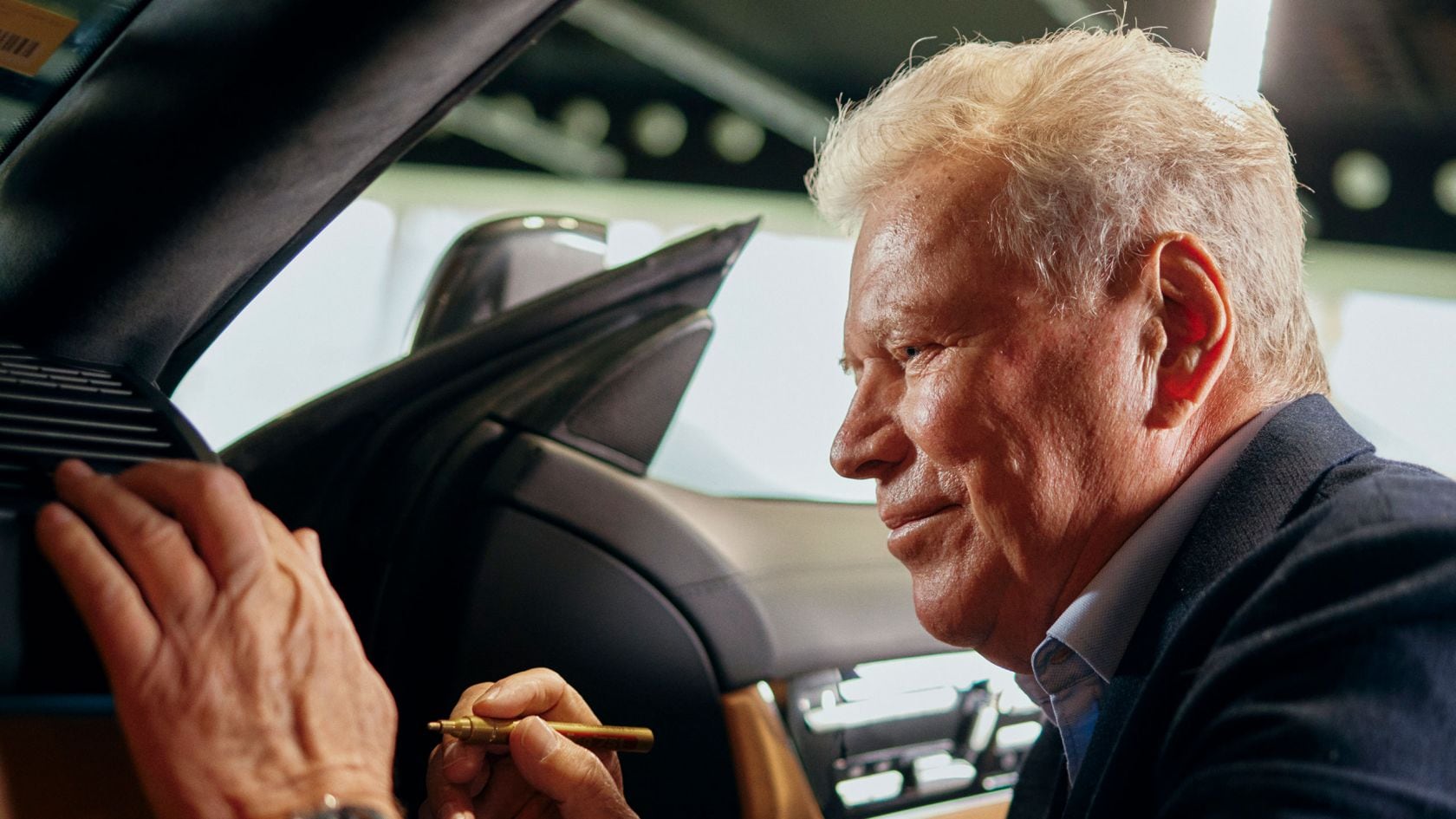
Now Mario Darok nods in agreement. He chose his classy coupé of the 2010 model year for yet another reason. He got ahold of the rare special model “100 Years of Trademark” with special equipment. Its identifying feature: two badges in the style of 1909 with the Mercedes star and Benz laurel wreath in the centre console. “This connection to the history of the brand makes me happy every time I get in the car,” says the collector from Austria.
Text: Rüdiger Abele
Photos: Constantin Mirbach
Source: mercedes-benz.com
